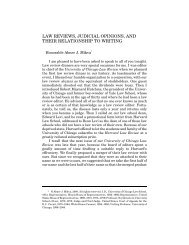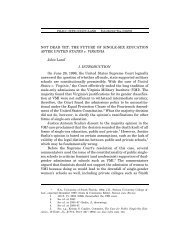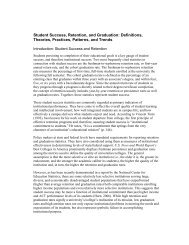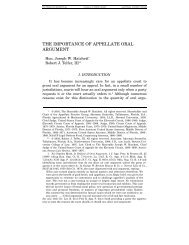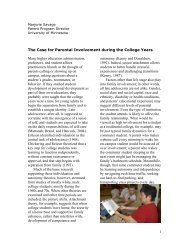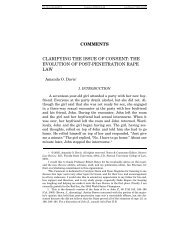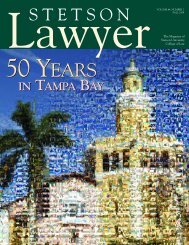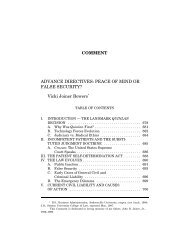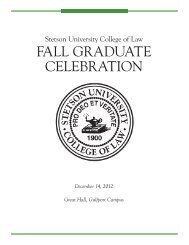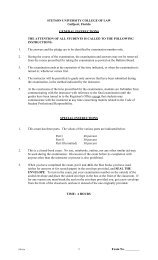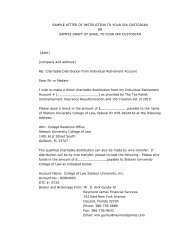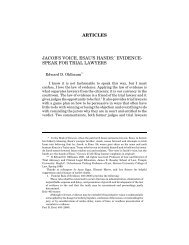TOWN OF CASTLE ROCK v. GONZALES: THE ... - Stetson University
TOWN OF CASTLE ROCK v. GONZALES: THE ... - Stetson University
TOWN OF CASTLE ROCK v. GONZALES: THE ... - Stetson University
You also want an ePaper? Increase the reach of your titles
YUMPU automatically turns print PDFs into web optimized ePapers that Google loves.
File: Hasanbasic.362.GALLEY(d).doc Created on: 9/25/2007 2:29:00 PM Last Printed: 9/26/2007 10:35:00 AM904 <strong>Stetson</strong> Law Review [Vol. 36entitled Property, in which he stated, “[A]s a man is said to have aright to his property, he may be equally said to have a property inhis rights.” 157 Although Madison alluded to the fact that propertyprotects things of value, it is unlikely that he meant “monetaryvalue,” which is how the term was construed by the Castle Rockmajority. 158 This is evidenced by Madison’s belief that propertyinterests should protect things that have no definite value, suchas a person’s “opinions and the free communication of them.” 159If taken at face value, Justice Souter’s concurrence would alsodramatically reduce the range of state-granted benefits protectedby the Fourteenth Amendment. According to Justice Souter, proceduraldue process should only be invoked to protect against arbitrarydeprivations of “substantive interest[s],” not “statemandatedprocess in and of itself.” 160 This argument is somewhatconvoluted, perhaps because Justice Souter continually referredto two categories of benefits—substantive benefits and benefits inprocess or procedure—as different levels of benefits, both of whichare analyzed under procedural due process. 161 The import of hisconcurrence is that substantive benefits are inherently morevaluable (at least for purposes of procedural due process protection)than benefits in process or procedure itself. 162 According toJustice Souter, Ms. Gonzales’ claim that she had a property entitlementto enforcement of her restraining order would necessarilyhave to fail under the Fourteenth Amendment because “‘processis not an end in itself.’” 163Despite the ambiguous and repetitive categorizations of“benefits” utilized by Justice Souter in his concurrence, he neverattempted to define what constitutes a substantive benefit or abenefit to process or procedure. Instead, he left these concepts157. James Madison, Property, Natl. Gaz. 1, 1 (Mar. 29, 1792) (available at http://www.vem.duke.edu/POI/madison.pdf) (accessed Feb. 2, 2006).158. Castle Rock, 545 U.S. at 766.159. Madison, supra n. 157, at 1.160. Castle Rock, 545 U.S. at 771 (Souter, J., concurring).161. Id. Justice Souter was careful to note that he was strictly referring to proceduraldue process rather than substantive due process in his comment that “[t]he Due ProcessClause extends procedural protection [for] substantive state-law property rights.” Id. (emphasisadded).162. As stated by Justice Souter, “[A] State [does not] create a property right merely byordaining beneficial procedure unconnected to some articulable substantive guarantee.” Id.163. Id. (citing Olim v. Wakinekona, 461 U.S. 238, 250 (1983)).



